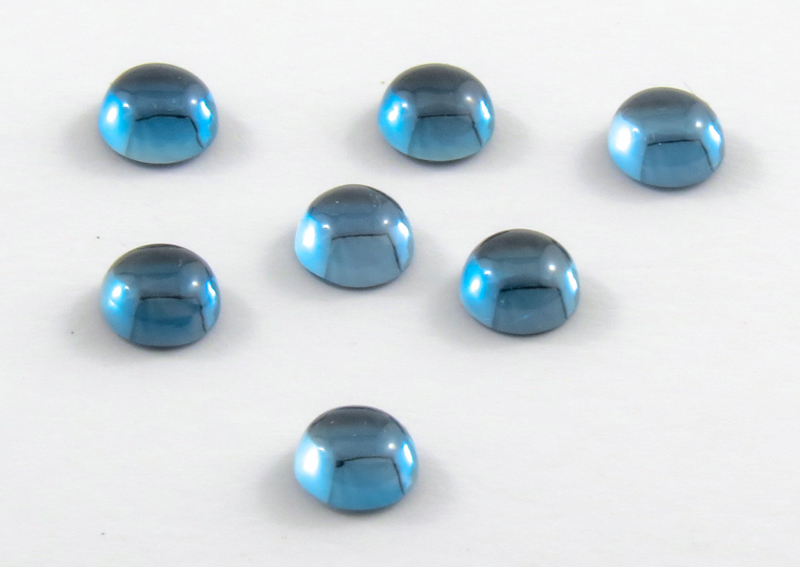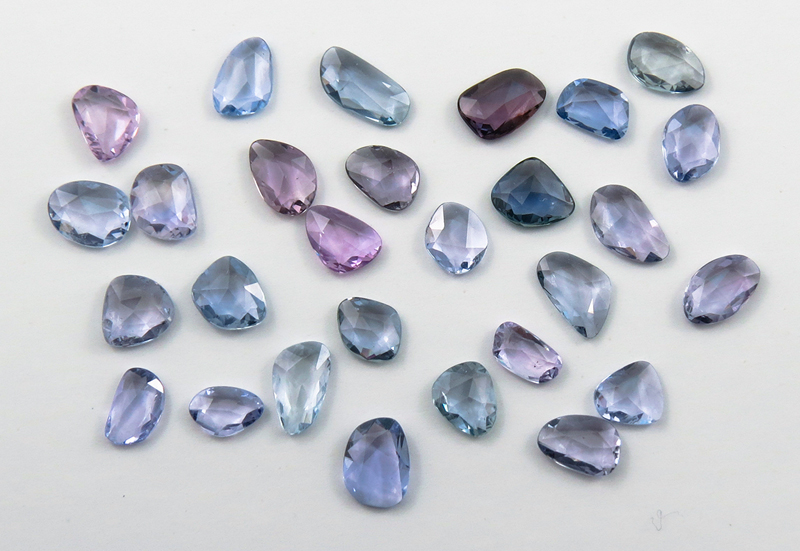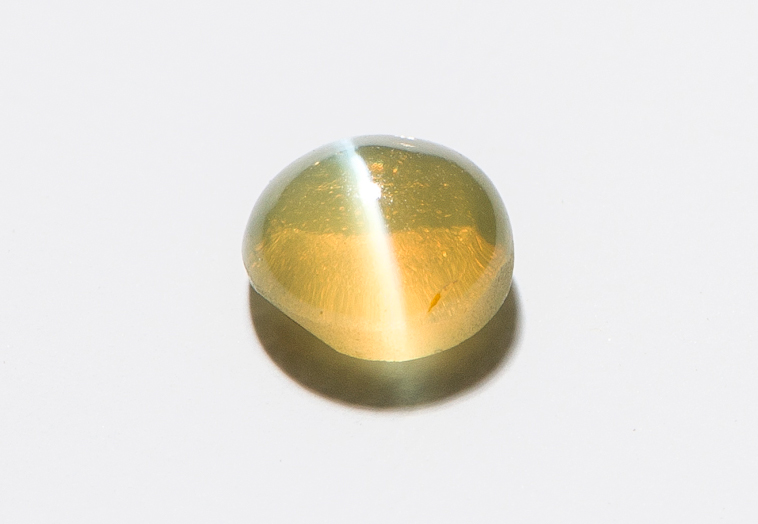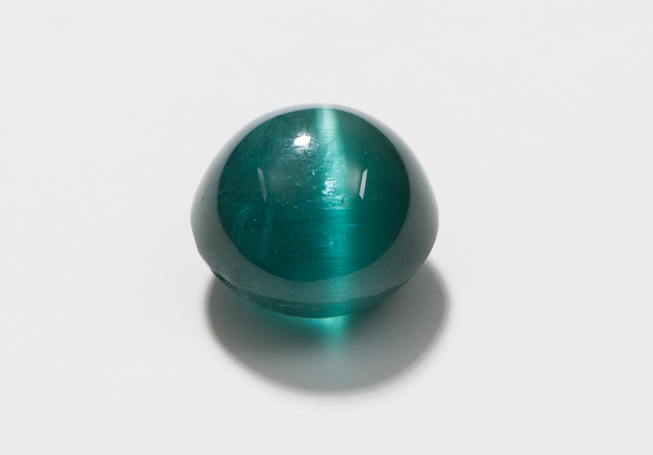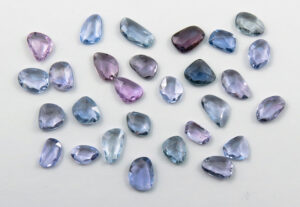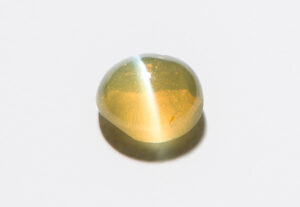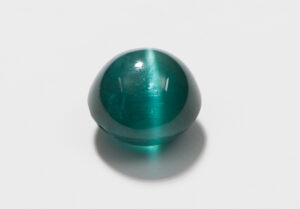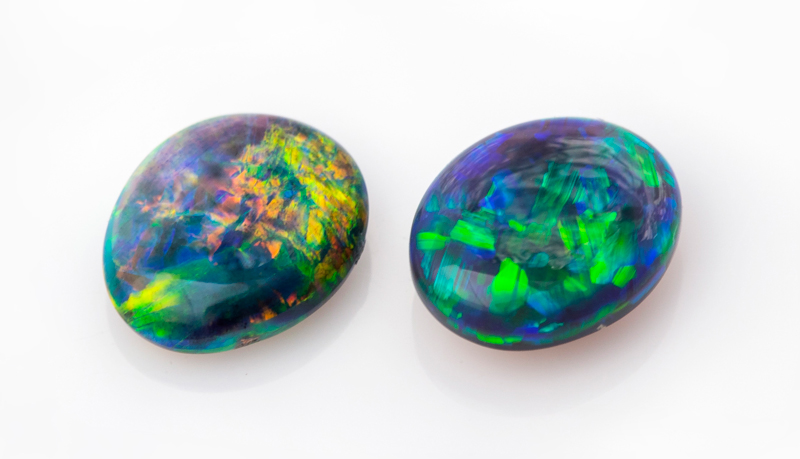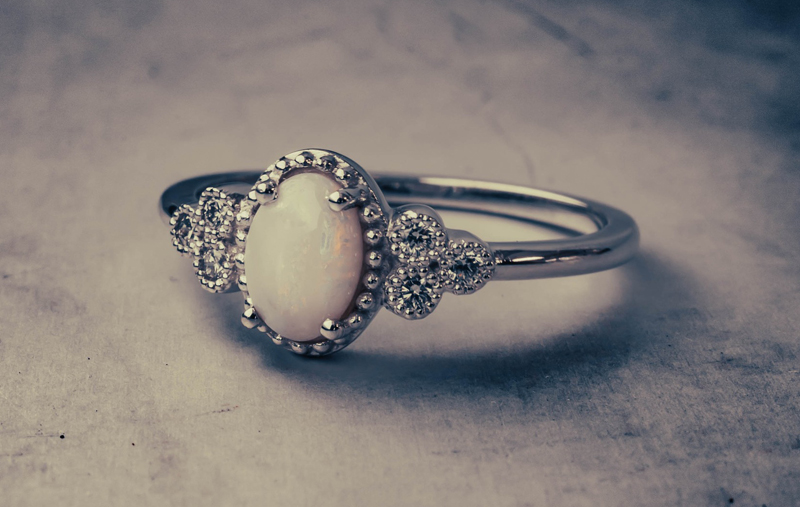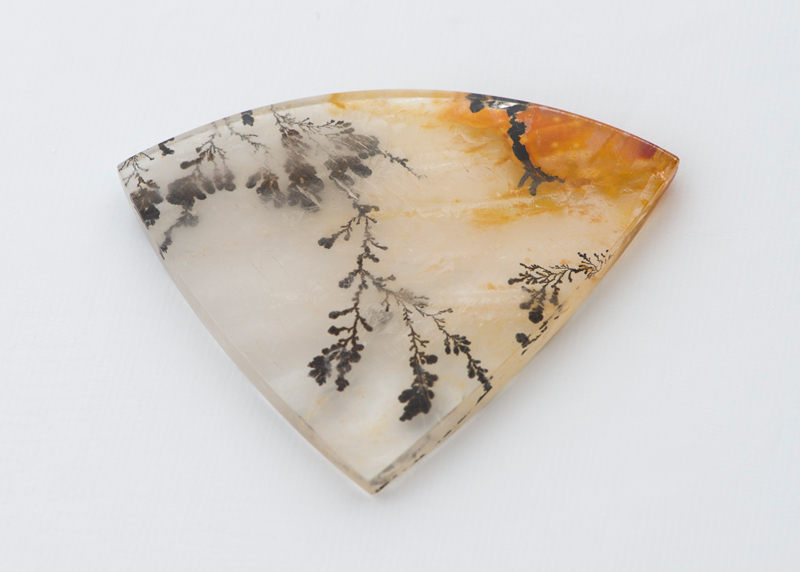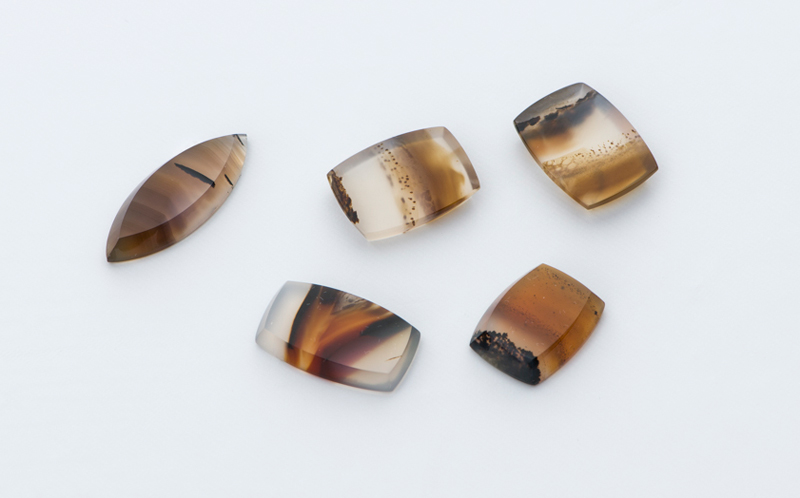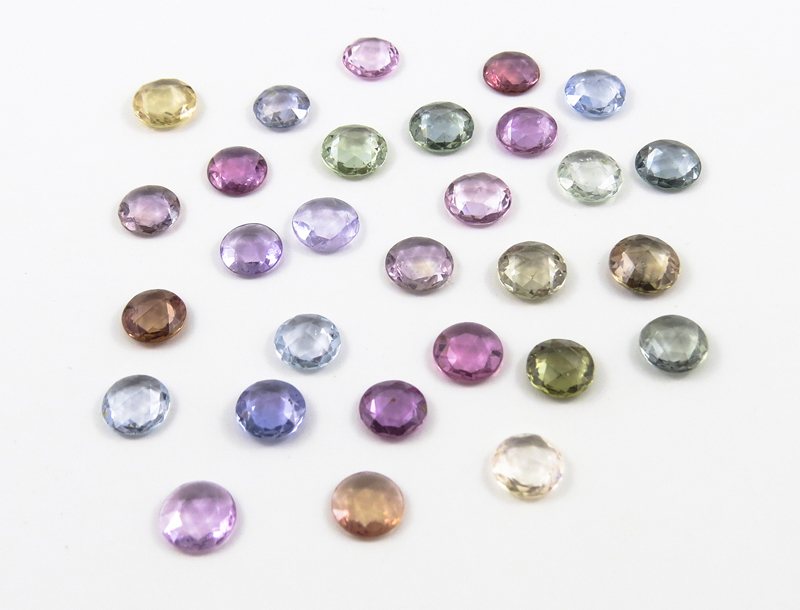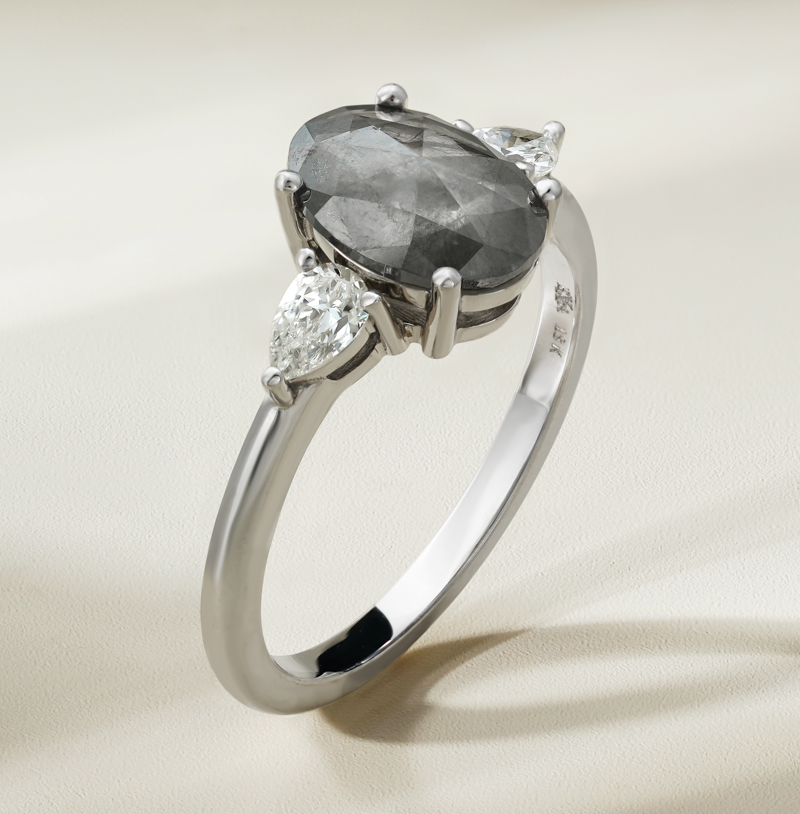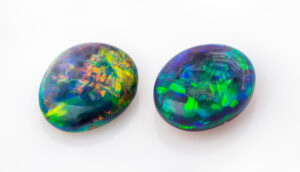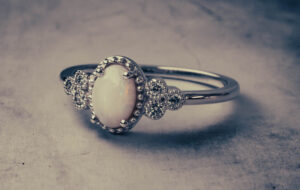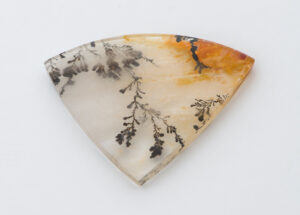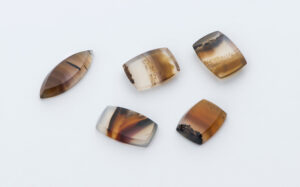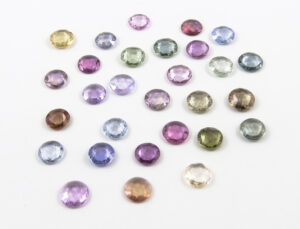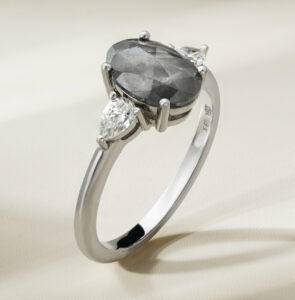By Bénédicte Lavoie
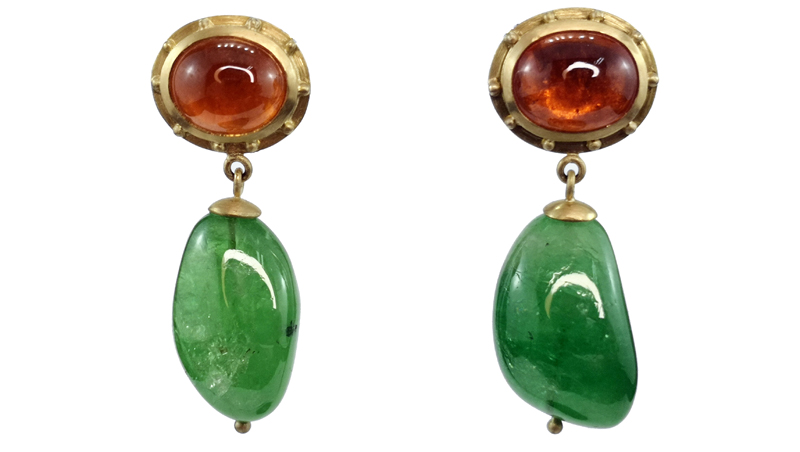
Photo by Golden Artificer Jewellery
Fashion is a fascinating phenomenon that constantly evolves and reinvents itself. One of its most intriguing aspects is its cyclical nature, where trends from the past resurface and become popular again with a new generation in the present. The jewellery industry is no stranger to this cycle, nor to distinct style eras that beg for reinvention, like art deco in the 1920s, glam in the 1950s, and, of course, the contemporary, playful trends of today.
Beyond design, we also notice this evolution in the style of gemstones used in popular pieces. Additionally, while modern technology gives us new and exciting ways to cut and design gemstones, the industry is also seeing a huge comeback in more traditional or vintage-styles of cutting (Figures 1 & 2).
Cabochon and rose cuts were widely used in ancient times, but, sadly, were gradually replaced by the brilliant cut following the Renaissance. Despite this dip in popularity, the rose cut experienced a resurgence in recent years due to its unique and vintage appeal (along with other options, such as the old mine cut in diamonds). Indeed, many jewellery designers and collectors have rediscovered the charm and elegance of rose-cut gemstones. Today, it is not unusual to find rose-cut diamonds and coloured stones (like sapphires, rubies, and emeralds) used in various contemporary jewellery pieces.
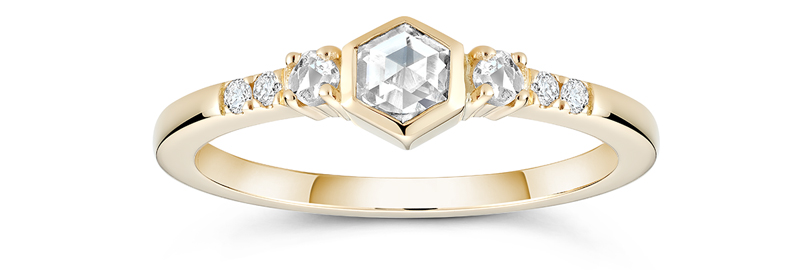
Photo by Ex Aurum
A brief history
The cabochon cut is one of the oldest and most traditional varieties for gemstones, dating back centuries. The term “cabochon” is derived from the French caboche, which means “head” or “dome,” reflecting the shape of the gemstone (Figure 3).
Cabochon-cut gemstones can be found in ancient jewellery, dating back to Egyptian, Greek, and Roman civilizations. Artisans would use wood and natural abrasives to polish the stones and get the smooth finish.
The rose cut appeared later, as technology developed, and was first used in the 16th century. The cut displays lustre and allows for the addition of some sparkle, as compared to the cabochon cut. Like the cabochon, the rose cut consists of a flat back and domed top; however, the top features small triangular facets, resembling flower petals. This style was widely used until modern cutting, such as the brilliant cut, was developed to showcase the brilliance and sparkle of a gemstone more effectively (Figure 4).
More than just esthetic
Beyond appearance, there are many reasons to go with cabochon or rose cut.
In some cases, it is necessary to cut a stone into a cabochon to show optical phenomena. Cat’s eye or asterism, for example, will only be displayed on a polished domed surface (Figures 5 & 6). Likewise, to effectively display the star effect in a star sapphire, a gem needs to be cut as a cabochon rather than a faceted gemstone, as this allows the asterism to be visible and properly centred. The cabochon cut maximizes the visibility of the star effect by positioning the needle-like inclusions parallel to the base of the gemstone. When light enters the stone, it interacts and reflects on the rutile inclusions, causing the star-shaped pattern to appear. If a star sapphire were cut with facets like a traditional faceted gemstone, the star effect would be minimized or completely lost. The faceted surfaces would interfere with the reflection and refraction of light necessary to create the star pattern.
Cabochon and rose cuts are also preferred for softer stones, such as opals, turquoise, or moonstones, as these help protect the stones by minimizing the number of exposed edges or facets that could be vulnerable to damage (Figures 7 & 8).
Most opaque gemstones will be cut as cab because there is no need for facets, as these will not help for the brilliance (think: lapis lazuli or turquoise). Meanwhile, some stones, like jasper or agate, will be cut to show their beautiful patterns and colour zoning (Figures 9 & 10).
Additionally, from the perspective of a cutter, we consider the rose cut in two scenarios:
- Situations where a rough stone is very flat (as is often the case where stones are found in fragments). Cutting a flat rough as a brilliant cut would either result in a windowed stone (when the pavilion is not deep enough and you can read through the stone), or we will lose too much material by cutting the ideal proportion (Figure 11).
- Situations where a stone has a lot of visible inclusions, which can often result as a lack of brilliance (i.e. if inclusions get in the way, the light will not be reflected back to the eye). In these cases, it is often better to go with a rose cut and take advantage of the gem’s colour and lustre rather than its brilliance and dispersion. Think about salt and pepper diamonds, where the rose cut is almost used to put emphasis on these inclusions (Figure 12).
Standing out from the crowd
Both cabochon and rose-cut gemstones showcase the artistry and craftsmanship of lapidaries who strive to bring out the best in their work. These cutting styles emphasize the natural beauty of gems, showcasing colour, texture, and play of light in unique ways.
Indeed, whether adorning a ring, pendant, or earrings, cabochon and rose-cut gemstones evoke a sense of timelessness and individuality. They offer an alternative to the brilliance of faceted gemstones, creating a distinct esthetic that appeals to those seeking a touch of vintage charm, earthy elegance, or a celebration of the gem’s natural allure.
In an industry where faceted gemstones often take the spotlight, cabochon and rose-cut gemstones offer a captivating alternative. They remind us of the rich history, cultural significance, and artistry associated with gemstone cutting, adding depth, character, and a touch of enchantment to the world of jewellery.
 Bénédicte Lavoie, FGA, is co-owner and vice-president of Pierres de Charme and specializes in fine coloured gemstones. She joined the family business after completing a bachelor’s degree in business and human resources (HR) management and was awarded the internationally recognized title of Fellow of the Gemological Association of Great Britain (FGA–Merit). Based in Montréal, Pierres de Charme supplies fine gemstones to jewellers, goldsmiths, and award-winning artists across Canada and the United States. Lavoie can be reached at info@pdcgems.com.
Bénédicte Lavoie, FGA, is co-owner and vice-president of Pierres de Charme and specializes in fine coloured gemstones. She joined the family business after completing a bachelor’s degree in business and human resources (HR) management and was awarded the internationally recognized title of Fellow of the Gemological Association of Great Britain (FGA–Merit). Based in Montréal, Pierres de Charme supplies fine gemstones to jewellers, goldsmiths, and award-winning artists across Canada and the United States. Lavoie can be reached at info@pdcgems.com.


